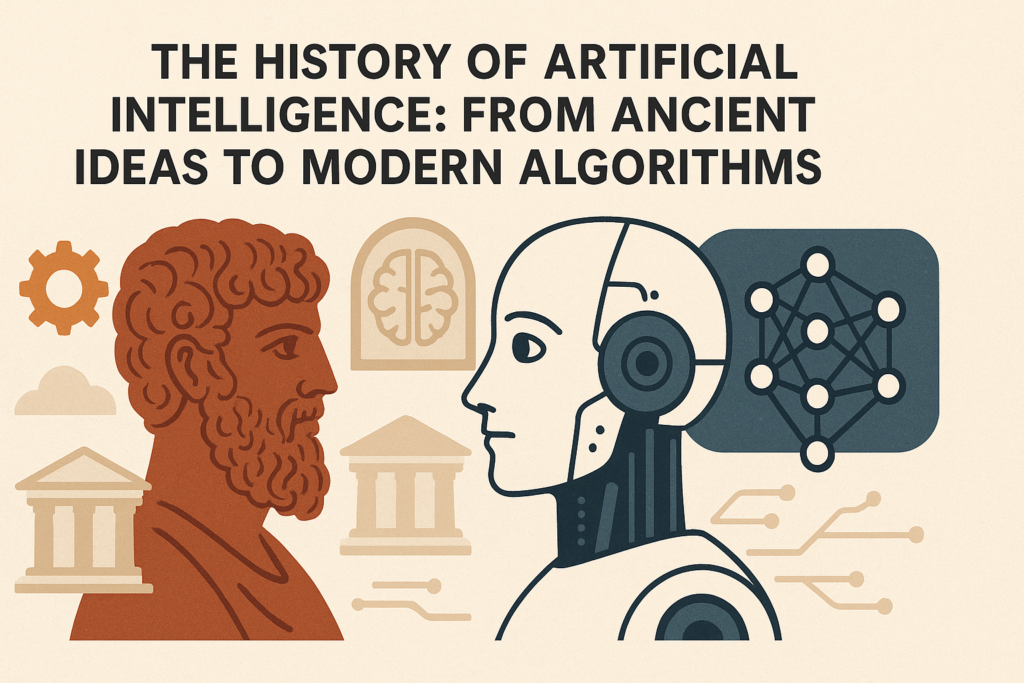Contents
How To Survive YouTube’s AI Policy Monetization Strategies

July 15, 2025 marked a turning point when YouTube just cut off ad revenue for AI-only channels.
For years, faceless AI-generated videos dominated the platform pumping out content at scale, racking up views, and cashing in on AdSense. But those days? They’re over. Overnight, countless channels woke up to demonetization notices, with one common reason: “Lack of original human content.”
It’s a wake-up call. YouTube isn’t banning AI tools but it’s drawing a line. The message is clear: if there’s no real human creativity, insight, or oversight involved, the ad dollars stop.
But here’s the good news creators who adapt will win. Channels that blend smart AI assistance with real human voice, value, and presence won’t just survive this update they’ll thrive in the next era of YouTube.
In this guide, we’ll break down exactly what changed, what YouTube is now looking for, and how to adjust your content strategy to keep and grow your monetization. Whether you’re just starting or already facing the fallout, this is your roadmap to staying relevant, revenue-safe, and future-ready.
Why YouTube’s AI Policy Update Matters Now
YouTube didn’t just change the rules, it changed the game. As of July 15, 2025 new monetization policies are officially live, and they’re hitting AI-driven channels hard.
Here’s what’s changed:
- Creators must now disclose any AI-generated content in Creator Studio.
- YouTube is actively demonetizing videos deemed “mass-produced,” repetitive, or lacking original human input.
- The so-called “AI slop” endless streams of auto-narrated content, stitched stock footage, and regurgitated scripts is being filtered out of the Partner Program.
And if you’re thinking, “That doesn’t apply to me,” take a closer look.
If your channel uses automated voiceovers, relies heavily on stock visuals, or repurposes existing content without adding real value, you could already be at risk. YouTube’s new enforcement system uses advanced detection models (ironically, AI-powered) to spot patterns of low-effort content and it’s sweeping fast.
Data point:
Early reports suggest hundreds of faceless channels are already seeing ad revenue slashed some losing thousands of dollars per month, practically overnight.
That’s not just a policy tweak it’s a platform-wide reset. And for creators who’ve built income streams on automation alone, it’s a make-or-break moment.
But it’s not all bad news.
YouTube isn’t anti-AI, it’s pro-human originality. The new policies are designed to support content that offers value, creativity and real-world insight whether or not AI tools were used in the process.
That’s why understanding the fine print matters. Because once you know what YouTube’s actually looking for, you can pivot with confidence.
In the next section, we’ll break down what does work now: the types of content that meet the new criteria, ways to blend AI with human creativity and how to protect and even grow your monetization in this new era.
Top Strategies to Stay Monetized
So now you know the stakes. The good news is that Staying monetized isn’t about ditching AI, it’s about using it responsibly and adding your human fingerprint. Here are the four strategies creators are using to adapt, survive, and thrive under YouTube’s new rules.
Add Genuine Human Creativity
Before: Channels leaned heavily on AI voiceovers, generic footage, and script rewrites from existing videos.
After: Smart creators are adding original intros, personal commentary and even brief on-camera moments to establish a clear human presence.
YouTube’s updated policy doesn’t require you to be on screen in every frame but it does want signs of human thought, emotion and originality. That could be your voice narrating with real context, an opinion segment that’s clearly yours, or a visual touch that ties the video back to you or your brand.
By integrating your unique voice and perspective, you meet YouTube’s “authenticity” threshold and you future-proof your content for whatever algorithm comes next.
Pro Tip: Even a short, personalized intro before the main AI-assisted content can dramatically improve perception and compliance.
Implement Mandatory AI Disclosures Correctly
One of the most overlooked changes? YouTube’s new AI disclosure tools in Creator Studio. If your video includes any AI-generated visuals, voices, or copy, you must check the appropriate disclosure boxes during upload.
And that’s not all. Best practice now means:
Adding a short AI use disclaimer in the video description
Visibly stating in the video (via a title card or voice note) that parts of the content were AI-assisted
Before: Creators ignored or skipped disclosures—and many of those videos got flagged or removed.
After: The ones who labeled clearly are staying compliant and even building trust with their audience.
Transparency is no longer optional it’s a trust signal. It shows YouTube and your viewers that you’re above board, not trying to game the system.
Pro Tip: You don’t have to over-explain. A simple line like “Parts of this video were generated with AI and reviewed by [Your Name]” goes a long way.
Transform Rather Than Translate
Here’s a core concept: AI can generate, but you need to elevate. YouTube’s monetization team is watching closely for signs that content has been transformed, not just paraphrased.
Don’t just reuse or reword existing videos or articles. Instead:
Add a fresh layer of insight or commentary
Use tutorials, demos, or analogies to explain the AI-generated script
Overlay human voice or visuals to provide context and relevance
Before: Channels simply summarized trending topics or narrated AI articles.
After: The winning creators turned that same base material into insightful commentary, step-by-step breakdowns, or visual guides adding real viewer value.
If you’re using AI to script content, think of it as a draft not the final product. What you say, how you say it, and what visual context you bring are what truly set your video apart.
Pro Tip: Ask yourself, “Would a viewer walk away knowing more, understanding better, or feeling connected?” If yes, you’re doing it right.
Audit & Rework Your Existing Library
Already have a backlog of videos you think might get flagged? Don’t panic, audit and adapt.
Start with YouTube Analytics. Identify videos with:
Low engagement (watch time, likes, comments)
High bounce rates
Heavily automated formats (robotic voice, no human visuals, generic scripts)
Once you spot them, take action:
Swap AI narration with your voice (even recorded via phone mic it works!)
Add on-screen captions or a quick face-to-cam intro
Update titles and thumbnails to reflect real value
Before: Channels ignored their old uploads, and saw them quietly demonetized.
After: Those who cleaned up their libraries just a few at a time saw their eligibility for monetization return.
Pro Tip: Prioritize your highest-earning or highest-traffic videos first. You don’t have to fix everything overnight just start.
Your 30-Day Action Plan to Secure Monetization
So, you know the risks and the opportunities. Now let’s get tactical. Here’s a week-by-week roadmap to help you align with YouTube’s AI policy and secure your channel’s monetization.
Week 1: Understand the Rules + Audit Your Channel
Start by reading YouTube’s official AI content guidelines (yes, the fine print). Know exactly what counts as “AI involvement” and what triggers monetization issues.
Then, head to your YouTube Studio and review your existing content library:
- Flag videos with robotic voiceovers, stock visuals, or recycled scripts
- Sort by engagement low watch time or high bounce = potential risk
- List your top 5 AI-assisted videos by revenue or traffic
This audit helps you prioritize what to fix first without getting overwhelmed.
Week 2: Add the Human Touch to Key Videos
Pick your 5 highest-performing AI-assisted videos and start injecting originality:
- Film short on-camera intros (can be selfie-style, 10–15 seconds)
- Add your voiceover or personal commentary to enhance the script
- Update your title, description, and tags to reflect value-adds
Even small human elements go a long way in showing YouTube and your audience that a real person is behind the channel.
Week 3: Disclose AI Use Transparently
From now on, treat transparency as part of your workflow.
- Check the AI disclosure box in Creator Studio when uploading
- Add a brief note in your description: “This video includes AI-generated visuals reviewed and narrated by [Your Name]”
- Consider an on-screen text disclaimer in the first 10 seconds
This protects you from future takedowns and builds viewer trust.
Week 4: Build a “Transformation Workflow”
To keep scaling while staying compliant, set up a repeatable system:
- Script rewrite step: Use AI to generate draft, then revise with your input
- Voice dubbing: Record your commentary or reactions—even with basic gear
- Editing layer: Mix original footage, new overlays, or personalized visuals
This ensures every piece of content you publish shows a human role and genuine transformation.
Ongoing Best Practices & Tools
Once you’ve aligned your channel with YouTube’s AI policy, the key is consistency. Policies will keep evolving but if you build good habits now, staying monetized won’t feel like a scramble every time a new rule drops. Here’s a quick table to keep you on track:
Practice | Why It Matters | Quick Tip |
Manual review before upload | Catches overly automated or “AI-slop” content that could be flagged | Ask yourself: “Does this feel human, or just convenient?” |
Use a checklist or script reminder | Ensures AI disclosures are included where needed | Add a line to your video script or upload workflow |
Track monetization status in Creator Studio | Alerts you to limited ads, reuse violations, or demonetization | Check weekly it takes just a minute to catch red flags early |
Keep a log of AI tools used | Useful for transparency during audits or appeals | A simple spreadsheet with tool names and usage notes works great |
Follow Creator Insider & creator forums | Helps you stay current with policy tweaks or enforcement trends | Set YouTube alerts or join a trusted Discord/Reddit SEO group |
These aren’t just checkboxes they’re habits that protect your revenue and reputation. Build them into your creative flow, and you won’t have to worry about policy surprises. Stay smart, stay human, and let your channel grow with confidence
FAQs & Objection Handling
“Do minor AI edits (like color correction) require disclosure?”
No. Disclosure is only needed if the AI contributed to visuals, audio, or narration content in a noticeable way.
“Can I still use AI for scripting?”
Absolutely. YouTube allows AI for ideation or productivity. If you rewrite, narrate, or add value, no label is needed.
“What happens if I miss the disclosure checkbox?”
YouTube may either auto-label your video or demonetize it entirely if it feels deceptive. Don’t skip it.
“Will fully animated AI videos survive?”
Yes—if they’re clearly fictional or artistic and not misrepresented as “real.” YouTube is stricter about fake realism than creativity.
“How often should I re-audit my content?”
Monthly is a safe rhythm. Especially after major YouTube updates or announcements.
“Is on-screen disclosure enough?”
It’s good but combine it with a description mention for maximum clarity and protection.
Conclusion: You Can Still Thrive on YouTube Just Show Up
The AI wave isn’t the end of YouTube content creation it’s just the evolution. What YouTube wants now isn’t perfection but its presence. Your voice, your insight and your creativity.
This isn’t about going back to manual everything. It’s about striking the right balance: use AI to speed up, but anchor every piece with your own value.
So start small. Fix a few videos. Test human intros. Disclose clearly. Bit by bit, you’ll future-proof your channel and grow stronger for it.
Now’s the time to act.
Review your top videos, record your first intro, and start putting your human stamp on everything you create. The algorithm and your audience will thank you.


